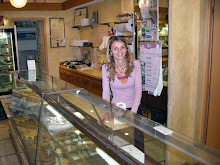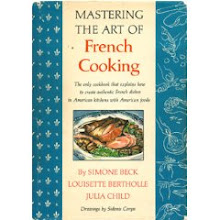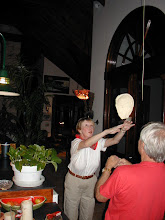Pat Conroy, one of the great writers of our time, passed away this last March at this home in Beaufort. He wrote many best sellers including Beach Music, South of Broad, and of course The Great Santani. In honor of Pat, I am revisiting his fabulous crab cake recipe today. The original post titled “How to Make Great Crab Cakes” is from back in 2014 and can be found here. Pat was not only a wonderful writer, he also knew his way around the kitchen. Anytime Pats name comes up in a conversation, I always ask, “Have you read his cookbook?” And the answer invariably is, “No, I didn’t know he wrote a cookbook.” Well he did and it’s called The Pat Conroy Cookbook, Recipes of My Life. The book is filled with top quality recipes, but to me the best part of the book is the stories he shares about the recipes. The book is a novel within a cookbook. And his crab cake recipe is one of the best recipes in his cookbook and I believe his legacy to the food world.
A cute story I’ll pass along about Pat’s crab cakes. His wife novelist Cassandra King says that Pat said to her when they first met that, his crab cakes are so good I’ll want to marry him after tasting them. They were and I did". True story.
 |
| Photo from Amazon |
But what makes a crab cake “great?” I believe the secret is in the preparation.
First and foremost, don’t load the crab cakes with a bunch of fillers, such as crushed crackers or lots of breadcrumbs. When you buy an expensive, quality ingredient like fresh lump meat crab, you want to taste the crab and not much of anything else. Also I beg you, please don’t substitute canned crab or fake crab. Buy the best lump crab you can afford.
Second, when you’re assembling the crab cakes, don’t over handle them. The best way I’ve found to mix the ingredients together is to use your hands. How many times have you heard that clean hands are the best tools in your kitchen? This is one of the times your hands beat any other utensil in the kitchen.
Third, chill the crab cakes in the refrigerator for an hour or so. Because you aren’t using fillers, you don’t have much a binder in this recipe to hold the cakes together, so chilling is essential.
The last and possibly the most important thing that I’ve learned for perfectly cooked crab cakes is from Pat Conroy. In his book The Pat Conroy Cookbook, Recipes of My Life, Pat shares the “southern secret” for perfect crab cakes, Pat says:
1) The fat must be sizzling hot when you add the crab cakes
2) Cook the cakes for two minutes on each side and
3) Turn them once.
That’s Pat’s secret, pure and simple.
A quick tip – a thin fish spatula, such as the shown one below from Williams Sonoma, is the perfect tool for lifting and turning delicate cakes or any fish to prevent them from falling apart. It’s an essential and inexpensive tool if you cook a lot of seafood, which we do. It’s also perfectly designed for flipping fried eggs.
 |
| Fish spatula from Williams Sonoma |
Today I’ve made my version of Pat’s crab cakes, following all of the ideas above, but I urge you to try Pat’s recipe from his cookbook, which can be found here. I like just a couple of squeezes of fresh lemon juice on my crab cakes, but Pat has a little bit fancier sauce napped with a lemony butter sauce and capers that’s also delicious and can be found here & here.
Enjoy!
Pat Conroy’s Crab Cakes
Adapted slightly from The Pat Conroy Cookbook – makes 8 cakes
Printable Recipe
1 pound lump crabmeat, picked over & cleaned, with all shell fragments removed
1 egg white, lightly beaten until just foamy but not stiff
1 tablespoon flour
2 tablespoons finely chopped scallions, white part only (or finely chopped chives)
1 teaspoon freshly ground black pepper
Several sprinkles of hot sauce to taste (I used Tabasco)
Small, small dash of Worcestershire sauce, taking care not to overpower the delicate flavor of the crabmeat
Pinch of Old Bay crab boil seasoning
2 teaspoons kosher salt (divided)
3 tablespoons unsalted butter
2 teaspoons peanut oil (don’t use olive oil, it will overpower the taste of the crab)
Lemon wedges
Place the cleaned crabmeat in a medium mixing bowl. Pour the foamy egg white over the crabmeat slowly, stopping occasionally to mix it through. When the crabmeat has absorbed the egg white and feels slightly sticky to the touch (about 30 seconds or so), dust the flour over the crabmeat, then sprinkle the chopped scallions, freshly ground black pepper, hot sauce, Worcestershire sauce, Old Bay, and a scant teaspoon of salt evenly over the top of the crabmeat.
With clean hands lift the crabmeat from the bottom of the bowl, turning over very gently with your hands to mix the ingredients, taking care not to over handle the crab. Separate into 8 equal portions and gently roll each between the flattened palms of your hands to form loose balls. Flatten slightly and transfer to a plate. Sprinkle both sides with the remaining teaspoon or less of salt, cover gently with wax paper, and (very important) refrigerate the cakes for at least one hour before cooking.
Line a baking sheet large enough to hold 8 crab cooked cakes with paper towels and set aside. Melt half of the butter and oil together in a heavy, 10” non-stick skillet, until the mixture is foamy and begins to brown. Cooking the crab cakes in two batches, carefully place 4 of the crab cakes in the hot fat and fry until a crust forms, turning only once, about 2 minutes per side.
Remove the crab cakes and drain on the prepared pan. Cover loosely with aluminum foil to keep warm while you make the second batch. To prepare the pan for the second batch, carefully pour off the cooking fat from the first batch and discard, wipe out the pan, and return to the heat. Prepare the second batch of crab cakes using the remaining butter and oil. Serve hot with lemon wedges. Our favorite way to serve them is on baby arugula, but watercress or baby greens are equally good.
For better viewing, click photos to enlarge.
I will be sharing this recipe with Foodie Friday at Rattlebridge Farms and Miz Helen’s Country Kitchen’s Full Plate Thursday.
Have a great week
& thank you for visiting My Carolina Kitchen.










































